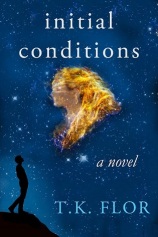“With the slow fascination of fear, he lifted himself on one arm and turned his eyes toward the blood-curdling blackness of the window.
Through it shone the Stars!
Not Earth’s feeble thirty-six hundred Stars visible to the eye; Lagash was in the center of a giant cluster. Thirty thousand mighty suns shone down in a soul-searing splendor that was more frighteningly cold in its awful indifference than the bitter wind that shivered across the cold, horribly bleak world …
“Light!” he screamed.
Aton, somewhere, was crying, whimpering horribly like a terribly frightened child. “Stars – all the Stars – we didn’t know at all. We didn’t know anything.”
Nightfall, Isaac Asimov
On our Earth, we are so familiar with the little twinkling objects dotting the sky, that we hardly pause to ponder on what lurks in the cold, dark space. Shielded behind the atmosphere, we look at the starry night, without feeling threatened. Occasionally, we may find the sight romantic or inspiring.
For astronomers, the haze of the atmosphere is disturbing rather than comforting. In the early 1900s, when the astronomer G. E. Hale looked for a place where observations would be unfettered by cloudy weather and poor seeing conditions, he chose Mt. Wilson’s 5700 foot peak, which overlooked the relatively unpopulated cities of Los Angeles and Pasadena (www.aip.org/history). In the 1920s, Edwin Hubble, for whom the Hubble Space Telescope is named, used the largest telescope of his day at the Mt. Wilson Observatory to discover galaxies beyond our own. (More about Edwin Hubble at: www.spacetelescope.org).
Another solution to evade the effects of the atmosphere is placing the telescope in an orbit around the Earth. The Hubble Space Telescope was launched in 1990 on the space shuttle Discovery. Since then, it whirls at 17,500 mph along a circular earth orbit of 340 miles altitude. The telescope can observe astronomical objects with an angular size of 0.05 arc seconds, which is like seeing a pair of fireflies in Tokyo from Maryland. Since its mission began, the Hubble telescope has made more than 1 million observations and has captured images going back to very distant past, at locations more than 13.4 billion light years from Earth. It is considered one of the most productive scientific instruments ever built. (Text summarized from NASA)
“In celebration of its 25th anniversary, Hubble has revisited the famous pillars, providing astronomers with a sharper and wider view. As a bonus, the pillars have been photographed in near-infrared light, as well as visible light. The infrared view transforms the pillars into eerie, wispy silhouettes seen against a background of myriad stars. That’s because the infrared light penetrates much of the gas and dust, except for the densest regions of the pillars. Newborn stars can be seen hidden away inside the pillars.”
Text from hubblesite.org

Source: Hubblesite.org. See a large photo here
More of the telescope’s images are featured in this pdf file.
Visit hubble25th.org to vote for the best Hubble image.



Is that Tokyo-from-Maryland thing the distance between the points on a Great Circle route, or as might be seen on a chord directly through an invisible Earth?
LikeLike
I cannot tell, as it is not specified on NASA’ site. Neither is specified the distance between the pair of fireflies. What we know is the ratio between the distances: ~ 4 10^(-8) of a degree. Assuming that the distance is along the air route (about 10,000 km) the distance between the fireflies is about forty cm.
LikeLike